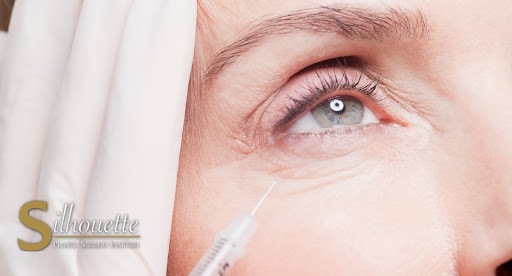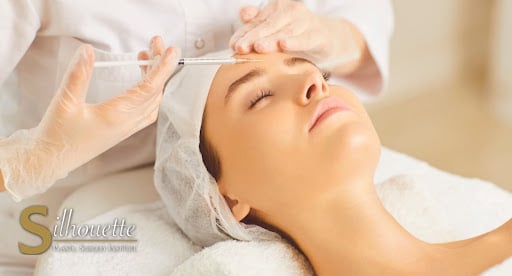Dr. Hootan Daneshmand
Botox Bakersfield and Orange County

Botox injections can treat so much more than facial wrinkles. The injections are FDA approved for excessive sweating, bladder dysfunction, migraines, and so much more. Additionally, Botox injections require minimal downtime while having minimal side effects, so that you can look great and get back to your normal life immediately. At Silhouette Plastic Surgery Institute, we want you to feel confident about your beauty. If feeling confident means treating your dynamic wrinkles with Botox Bakersfield, then we celebrate that. To schedule an appointment with Dr. Daneshmand, call 949-359-8397 today.
What is Botox?
An alternative to procedures like collagen injections and a surgical facelift, Botox® injections are a highly purified protein that’s derived from the bacteria that causes botulism. But Botox® is not botulism! Here is the key part: what is in a Botox® Cosmetic injection is a minuscule amount of the chemical secreted by the botulism bacteria. There is absolutely no bacteria – nothing alive – in the Botox® injection, so it won’t give you an infection. Botox® injections are sometimes used in conjunction with other treatments, such as Restylane.
How Does Botox Work?
Botox® is generally injected into facial muscles to produce its effect, but it doesn’t actually do anything to the muscle itself.
The Effect of Botox on Nerves
Unlike dermal fillers, Botox affects the nerves. For a muscle to work, it needs a signal. That signal starts in the brain, goes down the spinal cord, and goes out through the nerves. At the end of the nerve, there is a connection to the muscle across a small gap. For the nerve to tell the muscle to work, a small amount of a chemical is released from the end of the nerve. That chemical crosses the gap and causes the muscle to move. Botox® Bakersfield prevents the release of this chemical, therefore preventing muscles from moving. Basically, the muscle is paralyzed by Botox. Certain facial wrinkles are caused primarily by the muscles which create our facial expressions. So Botox treatments basically freeze or paralyze certain facial muscles to prevent dynamic wrinkles over time.
Dr. Daneshmand will thoroughly examine your facial anatomy, create marks on your skin around your problem areas, apply a topical anesthetic, and then inject Botox. The entire procedure only lasts a few minutes.
Can Botox Prevent Wrinkles?
Definitely! Botox® injections are truly prophylactic when it comes to the prevention of lines and wrinkles. Patients that have their horizontal forehead lines injected regularly often have a younger appearance than they did ten years ago.
Botox vs. Dermal Fillers
Dermal fillers can also treat facial wrinkles, although they’re most commonly injected into smile lines, lips, or cheeks. Dermal fillers aren’t only injectable, they come in other forms too such as:
- Radiesse, which is a calcium hydroxylapatite gel that can last for up to 18 months
- Collagen, which can last up to 4 months
- Hyaluronic acid, which can last between 6 to 12 months
- Sculptra, which is poly-L-lactic acid which can last for 2 years
- Polymethylmethacrylate beads which is the only type of permanent dermal filler on the market
Botox and dermal fillers differ in that Botox is better at treating more types of dynamic wrinkles. However, dermal fillers can last longer than a Botox injection. Additionally, both cosmetic injections come with minimal downtime and minimal side effects.
Does Botox Cosmetic Work for Migraines?
Silhouette Plastic Surgery Institute doesn’t specifically treat migraines. However, over the past several years we have used Botox® in migraine sufferers for cosmetic reasons. These patients routinely tell Dr. Daneshmand that their migraines occur less frequently and when they do happen, they are less severe.
Most Common Facial Areas That Botox Can Treat
At last count, there were over 180 medical, non-cosmetic uses for Botox® treatments described in medical literature. Cosmetically, Botox® can treat frown lines, laugh lines, worry lines across the forehead, crow’s feet lines, smoker’s lines around the mouth, downturned corners of the mouth, chin wrinkles, necklines, “marionette’s” lines running down from the corners of the mouth, as well as excessively sweaty armpits, palms, and feet.
Read also: Can You Use Botox Under Eyes?
What is Dysport?
Dysport is a type of botulinum toxin type A, presently used in Europe. It is similar to a Botox® treatment because it can treat brow lines and crow’s feet. However, it’s not quite as potent and it may not last as long.
Can You Use Botox and Restylane Together?
Combining Botox® with Restylane is new in the world of cosmetic treatments. It’s an ideal combination because Botox® smoothes new wrinkles while Restylane treats volume loss in the face. For example, if you’re insecure about the frown lines around your mouth, a Botox injection would soften the muscle around the mouth (the depressor anguli oris muscle) while Restylane would fill the lines in order to rejuvenate the face. The key to Restylane is to not overcorrect.
Botox Injection Risks and Side Effects
The most common side effect after a Botox® injection is a mild amount of droopiness in the eyelid (it looks like a “sleepy” eye). But some studies claim that this side effect occurs in as many as 5% of patients. The average time for eye droopiness to go away without any treatment is 10 days. Other risks and side effects include:
- General pain and bruising at the injection site
- Headaches
- Flu-like symptoms
- Dry eyes
- Drooling
- Crooked smile
- Minimal swelling at the injection site
If you experience any of these symptoms near the treated area, they will likely disappear over the course of a few days or weeks. If you experience the aforementioned symptoms for a long period of time, contact your doctor. Additionally, it’s possible for the toxin in Botox treatments to spread throughout your body, although this is very rare. If you experience the following signs and symptoms after a Botox injection, call your doctor immediately.
- Weak muscles
- Impaired vision
- Difficulty talking or swallowing
- Difficulty breathing
- Losing control of your bladder
Can You Become “Immune” to Botox?
Theoretically, you can experience tachyphylaxis from Botox® injections, but patients at Silhouette Plastic Surgery Institute haven’t experienced this. Patients who receive Botox® frequently for one or two years generally require less Botox® treatment. This phenomenon is similar to muscle atrophy from lack of movement or exercise.
What if I Don’t Like My Botox Cosmetic Results?
The results from Botox in Bakersfield will generally last a few months. So if you didn’t get the desired effect, you can rest assured that the results aren’t permanent. Botox injection results generally last the longest in the eyebrows. Meanwhile, results in around the lips and eyes last the least amount of time.
How Frequently Can I Get Botox?
Patients can receive Botox® every 3 to 4 months if desired.
When Can I Expect to See Botox Results?
You should expect to see full results in the Botox treatment areas in about 1 to 3 days.
How to Choose the Best Plastic Surgeon for Botox
You should look for a board-certified plastic surgeon with extensive training and hands-on patient experience – like Dr. Daneshmand at Silhouette Plastic Surgery Institute – for any cosmetic treatment. That way, you can rest assured that you’re getting the best, most natural Botox results.
Long Term Effects of Botox
Most people tend to have longer-lasting results after regular Botox® injections over several years. However, this does not happen in all patients.
Self-Care Instructions After Botox
There should be no strenuous activity for 90 minutes after the injection. Additionally, it’s important to not massage or rub the injection site for at least 24 hours so that you don’t accidentally spread the toxin throughout your body. Besides those things, you can return to all normal daily activities immediately after treatment.
Who Shouldn’t Get Botox?
Those who should not have Botox® include those who are pregnant, breastfeeding, taking aminoglycoside antibiotics, have neuromuscular disorders, or have a history of sensitivity to Botox.

